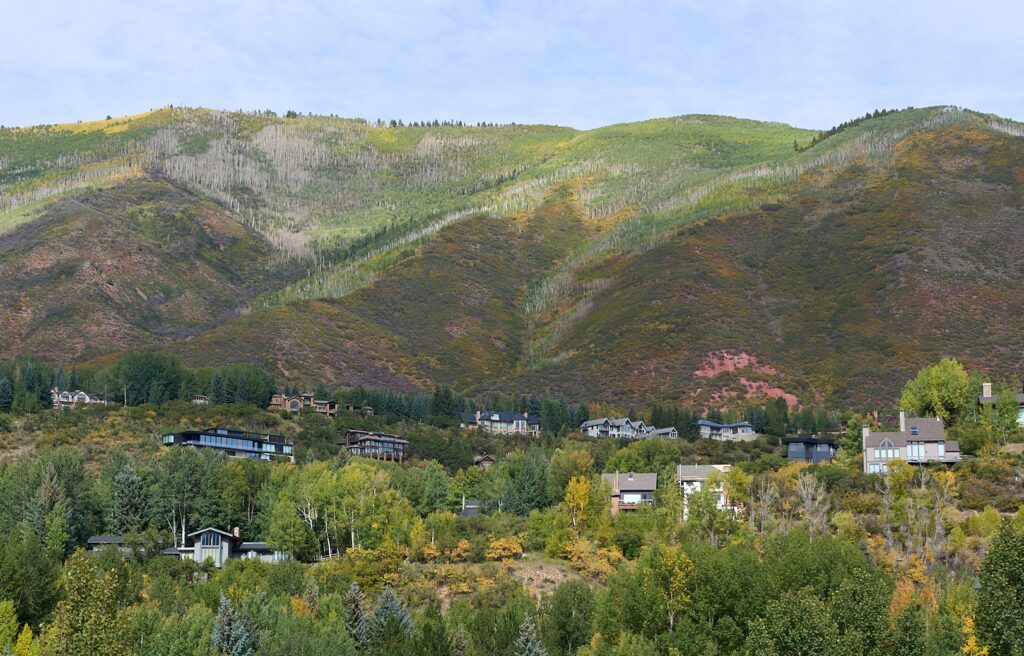Special Birding Field Trip – Spring on West Sopris Creek: A Cacaphony of Bird Song with Jody Cardamone
ACES Staff
May 17, 2019

Tuesday, March 14, 2019, 7AM – 2PM
Weather: Partly sunny
Location: West Sopris Creek
| Species Identified |
| Mallard Rock Pigeon Eurasian Collared-Dove Mourning Dove Black-chinned Hummingbird Broad-tailed Hummingbird Turkey Vulture Osprey Northern Harrier Cooper’s Hawk Red-tailed Hawk Red-naped Sapsucker Lewis’s Woodpecker Western Kingbird Plumbeous Vireo Pinyon Jay Steller’s Jay Woodhouse’s Scrub-Jay Balck-billed Magpie American Crow Common Raven Tree Swallow Violet-green Swallow Black-capped Chickadee Mountain Chickadee House Wren Blue-gray Gnatcatcher Ruby-crowned Kinglet Mountain Bluebird American Robin House Finch Cassin’s Finch Pine Siskin American Goldfinch Green-tailed Towhee Spotted Towhee Chipping Sparrow Song Sparrow White-crowned Sparrow Bullock’s Oriole Red-winged Blackbird Brown-headed Cowbird Orange-crowned Warbler Virginia’s Warbler Yellow-rumped Warbler (Audubon’s) Yellow Warbler Black-throated Gray Warbler Black-headed Grosbeak |
Comments:
As part of ACES’ 50th Anniversary Celebration throughout the year 2019, this field trip was a special opportunity to bird with ACES’ first director, Jody Cardamone. The day began with some exciting birding in the parking lot at the Emma Schoolhouse where we saw pinyon jays, western kingbirds, white-crowned sparrows, Lewis’s woodpeckers, and other species. We were able to study the pinyon jays which were perched in the top of a large cottonwood; this seemed uncharacteristic for habitat, but this behavior reminded us that these birds use riparian and other types of habitat that bisects or is at the edge of their preferred pinyon-juniper woodlands. The group then spent an hour and a half in high-quality pinyon-juniper woodland with areas of sagebrush and scrub oak thickets where we observed species characteristic of these habitats: black-throated gray warbler, Virginia’s warbler, plumbeous vireo, black-chinned hummingbird, blue-gray gnatcatcher, and green-tailed and spotted towhees. We had excellent views of several black-throated gray warblers that were engaged in a territorial spat and came close to our group. We were able to see the yellow spot at the lores, which can only be seen at fairly close range and in good light.
Our next stop was on the Crown BLM Recreation Area where we focused on orange-crowned warblers, followed by a hike to Dinkle Lake and the surrounding spruce-fir, aspen forest, open water, shrubland, and meadow habitats. Additional species here included red-naped sapsucker, mallard, and house wren. The trip concluded with lunch and birding at the Cardamone residence where we saw Bullock’s orioles, Cassin’s finches, black-headed grosbeaks, and more in their bird-filled yard and meadows. We observed some migrating birds completely out of their usual habitat, such as the Bullock’s oriole in pinyon-juniper woodland. Taking advantage of all the springtime singing, we focused on learning bird songs by finding birds whose songs we heard and them observing them to combine the visual and auditory information for best memory retention. Everyone contributed sightings, behavioral observations, and other fun nuggets of information and stories on this field trip, leading to an impressive overall list of 49 species. Join us this summer for more exciting field trips, classes and outings to learn about the birdlife of the Roaring Fork Valley!
~ Rebecca Weiss, ACES Bird Guide
Photo by Dale Armstrong
Related Content

RFV Phenology: Green is out, yellow is in! Or is it?
Learn More
ACES // City of Aspen Open Space Birding: Marolt Open Space 9/5/2024
Learn More